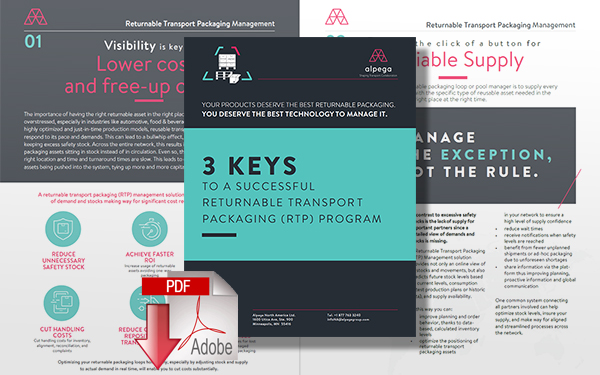A Seven-Step Approach to Improving Your Supply Chain & Logistics Dock Scheduling Operations

Logistics carriers and vendors have a new and changing role in the supply chain: they are now strategic partners with shippers, customers and other entities in the supply chain, and their operations are often tied to dock scheduling processes.
It All Happens On The Dock
With new technologies and tools, dock scheduling can be monitored and managed like never before.
However, it is important to use such tools and technology solutions in an effective way that brings positive results.
Carriers and vendors have a new and changing role in the supply chain: they are now strategic partners with shippers, customers and other entities in the supply chain.
Their operations are often tied to dock schedules and related internal processes.
Thus, paying attention to all activities surrounding dock operations is key.
Carefully scheduling dock activities using best practices is critical in building a lean and efficient supply chain.
To improve your dock schedule, here’s a seven-step approach to be used as a starting point to fine-tune your dock scheduling and help your overall supply chain strategy thrive.
A Seven-Step Approach to Improving Your Supply Chain Dock Scheduling
1. Design a Schedule That Reflects the Realities of Your Operation
Consider your resources and constraints. What are your operating hours? How many appointments can you really handle? Does this change at different times of the day? What are realistic turn times? Do these vary by vehicle type, product, dock, loading team, order type, inbound delivery vs. outbound shipment? How much “buffer” time should be factored in?
If your schedule is designed unrealistically, it will perform inconsistently, and you will quickly lose the trust of your loading teams and the cooperation of your carriers.
2. Establish Policies & Procedures You Are Prepared To Enforce
Seek input on policies and procedures from your traffic planning and loading dock teams, and commitments on how they will be enforced. Make sure your scheduling tools are intuitive enough to prevent appointments that do not comply with these policies, will disrupt your processes, or that you are not prepared to handle properly.
3. Provide Your Carriers and Vendors Easy Access to Your Schedule
The advent of “Cloud” technology is ideal for scheduling. It enables you to offer a secure, collaborative environment to post your schedules online, and for your partners to view availability and schedule their own appointments (making it easier for you to hold them accountable for on-time arrival performance).
Your partners will appreciate the ability to access your scheduling tool 24/7/365, knowing that 20 seconds of online scheduling will help their drivers avoid several hours of waiting time.
4. Record, Monitor & Track Milestones (Promise Vs Performance)
“You get what you measure!”
Capturing date & time stamps of arrival/departure and start/finish loading milestones is the starting point for measuring and improving key metrics such as percentage of on-time arrivals and average turn-times.
The recording of this data can also serve as valuable documentation when investigating carrier demurrage charges, and employee overtime costs.
5. Communicate Proactively, In Real-Time, With Your Carriers & Internal Users
Event notifications to internal users (planners, loaders, etc.) and external partners (carriers, vendors, customers) when milestones are executed can trigger and streamline front-office processes such as invoicing, cost accruals, or revenue recognition.
E-mail alerts triggered by updated plans can enable all partners to react quickly to the changing status or situation, seek alternatives and provide quality customer service.
Timely text (SMS) messages to drivers to alert them of schedule delays or dock availability, or efficiently direct them to the appropriate dock door or spot in the yard upon their arrival will foster a more collaborative relationship with your carriers.
6. Establish KPIs and Actively Analyze Performance Data for All Parties
Make operational and strategic decisions based on analysis of your Key Performance Indicators (“KPIs”) rather than on assumptions and intuition.
Your data should point out where the inefficiencies are within your dock operations and where cost savings can be found. Are your carriers non-compliant or are your loading teams inefficient? Are your published turn-times realistic? Are you at peak capacity, or can you adjust your schedule to handle more appointments?
7. Redesign Your Schedule and/or Make Operational Adjustments as Needed
Be prepared to make strategic, mid-course adjustments to your schedules and processes. Listen to what your data is telling you and embrace feedback from your dock teams and carriers. They will provide you with a wealth of insight to help you identify when and where changes should be made.
Do you need a different schedule for weekends? How does your schedule handle the increased demand for capacity at the end of the month or forecasted seasonal peaks? Can you adjust your schedule in a timely manner to address unplanned manpower issues?
Your dock scheduling needs to be flexible and your ability and willingness to adapt it to real-time, changing conditions and long-term trends is the key to continual improvement.
Related Article: Digitalization of Logistics and Supply Chains Isn’t The Future; It’s Already Here!
Related Download
Reverse Logistics: 3 Keys to a Successful Returnable Transport Packaging Program
This e-book gives you detailed insights into three success factors you will profit from when using a reusable packaging management solution. Download Now!
More Resources from Alpega
Article Topics
Alpega News & Resources
Digitalization of Logistics and Supply Chains Isn’t The Future; It’s Already Here! Reverse Logistics: 3 Keys to a Successful Returnable Transport Packaging Program A Seven-Step Approach to Improving Your Supply Chain & Logistics Dock Scheduling OperationsLatest in Transportation
Ranking the World’s 10 Biggest Supply Chains The Top 10 Risks Facing Supply Chain Professionals Walmart’s Latest Service: Ultra Late-Night Delivery City of Baltimore Files Lawsuit to Recoup Money for Collapsed Bridge The Era of Self-Driving Tractor-Trailers Set to Begin Is the Trailers as a Service (TaaS) Model Right For Your Business? Why Grocery Shoppers are Leaving Stores to Buy Their Food Online More Transportation















